The Latest From Japan’s Nuclear Disaster
Wednesday (Japan time), multiple news services reported that Japanese officials had withdrawn all emergency workers from the Fukushima Daiichi nuclear power plant.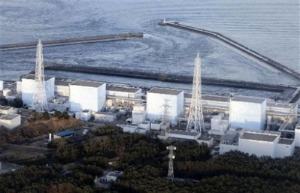
For the very latest, watch the live stream from Japanese television below.
Update, Tuesday, March 15: Wednesday (Japan time), multiple news services reported that Japanese officials had withdrawn all emergency workers from the Fukushima Daiichi nuclear power plant. Meanwhile, the Nikkei.com news service reported that officials now estimate that 70 percent of the fuel rods at the Unit 1 reactor core were damaged, with damage to approximately 33 percent of the fuel rods in the Unit 2 reactor core also reported.
According to the NHK TV News channel, around 10:30 a.m. Japan time on Wednesday, white smoke or steam poured from one of the damaged reactor buildings. At the same time, radiation levels within the plant went rose significantly, into the low millisievert-per-hour range. The plant’s operator could not confirm the origin or nature of the cloud, but said that supervisors had withdrawn their workers as a result of the radiation spike. Radiation levels began to drop after the initial spike. It was not immediately clear when workers would return to the plant. Commentators and officials speculated that the cloud could have come from either the Unit 4 waste pool or the Unit 2 reactor building.
Update, Tuesday, March 15: The fire is reported as no longer “visible” at Unit 4. That is significant because of the danger of an active fire at the fuel pool.
Update, Tuesday, March 15: At 5:45 a.m. Wednesday (Japan time) a new blast and fire were reported in the waste storage area in the Unit 4 reactor containment building at the Fukushima Daiichi reactor facility. The Unit 4 reactor had been offline for maintenance before the earthquake, but extremely radioactive nuclear waste was stored in the building above the reactor core. Like the cores, that waste requires constant water cooling, but unlike the cores it is not contained within a hardened metal pressure vessel. The blasts are believed to have been caused by hydrogen byproducts that are safely suppressed during normal plant operations.
According to NHK TV News, neither the government nor the Tokyo Electric Power Co. immediately held a press conference, and emergency crews were unable to reach the reactor to assess the situation. Shortly before the latest blast, the Japanese and United States governments ruled out the use of helicopters to drop water on the four stricken reactor cores at the Fukushima Daiichi facility.
The Japanese government immediately expanded the exclusion zone to 30 kilometers around the plant. Individuals in that zone were told to either evacuate or stay indoors with the windows closed and the air conditioning off.
Recap, Tuesday, March 15:
- Fires or explosions have affected all four of the reactor containment structures at the Fukushima Daiichi nuclear power plant.
- The Unit 1 and Unit 3 containment buildings have visible damage to their structures, while damage to the Unit 2 building was reportedly in the lowest level of the building, in the suppression pool. No images of the Unit 4 building have been made available since before Tuesday’s fire.
- The Unit 3 reactor core was fueled with a plutonium-uranium MOX mixture, making it potentially the most dangerous of the reactors.
- The Unit 4 reactor was offline at the time of the accident, but extremely radioactive waste was stored in a room above the reactor core, and a fire was reported in that room late Monday.
- The Unit 4 fire (Wednesday morning, Japan time) resulted in a release of radiation that at least temporarily spiked local readings around the plant to more than 400 millisieverts per hour (40,000 microsieverts/hour). The normal, natural, background rate is approximately 0.2 to 0.35 microsieverts/hour. A medical X-ray results in approximately 20 to 100 microsieverts per film.
- Readings dropped well below the 400 mSv/hour reading level once the fire at Unit 4 was countered. It was unclear if the fire was entirely suppressed.
- Clouds of smoke and steam were detected from both the Unit 3 and Unit 4 containment buildings at various times in the last 24 hours.
- The 400 mSv/hour reading caused Tokyo Electric Power Co. to pull all but 50 of its several hundred emergency workers from the plant site. The company said that cooling efforts at all reactors were continuing.
- The Japanese regulatory agency, the Nuclear and Industrial Safety Agency, has not issued an English-language report since before the Unit 4 fire (Wednesday morning, Japan time).
Update, Monday, March 14: The owner of the Fukushima plant reported that a blast was heard Tuesday (local time) at the building containing the stricken Unit 2 reactor. The blast, which followed explosions at Unit 1 and Unit 3, may have occurred near the suppression pool at the bottom of the reactor assembly. The atmospheric pressure in the pool dropped suddenly, indicating that the pool’s casing may have cracked or otherwise been damaged.
Japanese channel NHK reported that noncritical workers at the Unit 1 and Unit 3 reactors were being evacuated, at least temporarily. The plant operator said that water injection efforts would continue as efforts were made to cool the three damaged reactor cores.
There were no reports of visible damage to the Unit 2 building, but local radiation levels increased, leading to the staff evacuation.
Update, Monday, March 14: Clarification: British Nuclear Fuels Ltd. became defunct in 2010. Since then French nuclear firm AREVA has replaced it as a major foreign supplier of nuclear fuel.Update, Sunday, March 13: A large explosion has occurred at the Unit 3 reactor at Japan’s Fukushima nuclear power plant. The explosion included a large orange flash, which indicates that it was probably the result of a hydrogen detonation. This explosion follows the partial destruction of the Unit 1 containment building in a previous hydrogen explosion. [See video of the explosion here]
The Washington Post reports that Japanese nuclear officials have resorted to using fire pumps to inject tens of thousands of gallons of seawater directly into the reactors at two Fukushima nuclear power complexes. This emergency action has been undertaken to control what is now being described as a “partial meltdown” of at least two reactor cores.
Reports said that Japanese nuclear officials believe the inner containment vessel of the Unit 3 reactor was still intact after the explosion. The danger posed by a containment breach at the Unit 3 reactor is especially serious because the reactor was recently fueled with a semi-experimental MOX nuclear fuel, which is a combination of plutonium oxide and the more common uranium oxide. Plutonium is considered a substantially more dangerous nuclear fuel, and the Japanese MOX program was delayed for more than a decade because of local opposition and the revelation that the British fuel manufacturer, British Nuclear Fuels Ltd., had falsified safety reports in the late 1990s.
Original report:
Dramatic and conflicting reports emerged Saturday regarding the safety status of the Unit 1 reactor at Japan’s Fukushima Daiichi power plant.
The news aggregator Drudge Report linked to a story in the Japanese press that said the explosion that destroyed the reactor’s outer containment building “could only have been caused by a meltdown of the reactor core.” The Japanese article said the source of the report was the Japanese Nuclear and Industrial Safety Agency.
Some websites and blog posts criticized the article, saying it was either the result of “hysteria-driven journalism” or old information. The term core meltdown is not officially defined, but it can refer to a number of scenarios in which safety systems fail and the nuclear fuel or the metal cladding around the fuel reaches extreme temperatures. Most active reactors today are within a primary containment vessel, made out of metal, which is designed to encase even molten nuclear fuel.
All nuclear reactors employ a nuclear fuel that slowly undergoes nuclear decay via fission. The fuel atoms split, shooting neutron particles into neighboring atoms, leading to a controlled fission chain reaction. A byproduct of this reaction is a tremendous amount of thermal energy, which is then used to heat water and produce steam that drives a turbine linked to an electrical power generator.
The explosion at the Fukushima Daiichi power plant occurred about 3:30 p.m. local time Friday. Videos of the explosion showed a violent event with debris being thrown high into the air, followed by a substantial cloud.
Later, photos of the plant showed a skeletal structure remaining, with most of the building walls missing.
The Unit 1 reactor is a General Electric-type boiling water reactor, in which water passes through the reactor core in a single loop, absorbs thermal energy and is then used to drive a steam turbine. The cooling system is linked to this loop and requires electrical power to operate.
After Friday’s massive earthquake, the reactor was automatically placed in its lowest-power “shutdown” state. Even in this state, the nuclear fuel requires active water-cooling and a steady supply of electrical power. According to reports, several backup power generators failed, leaving the plant with only eight hours of battery power. The Unit 1 reactor has been without active cooling for a longer period than called for in its design.
Japanese officials have reportedly flooded the reactor core with salt water, with the goal of reducing the core temperature. This is considered to be an unusual emergency measure, which the company probably did only to avert greater disaster. The salt water may cause chemical corrosion of the fuel assembly, which would ruin the reactor core’s economic value. It is unclear how salt water was delivered to the core, or whether any of the potentially radioactive water was being released back into the sea after entering the core.
It is considered vital to keep the fuel assembly completely submerged, to ensure proper cooling, and to keep the assembly from burning in a chemical fire, which would release radioactive smoke. Some reports indicated that the core may have been partly uncovered before the infusion of the salt water.
The explosive damage to the containment building suggests that substantial portions of the water cooling loop were destroyed. Such an event would cause the water and steam to escape, leading to a release of radioactivity in the form of various gases that collect within the fuel assembly and cooling loops.
Most worst-case scenarios at the Japanese plant are less dire than the disaster at Chernobyl in 1986. The Chernobyl plant reactor core was not housed within a hardened primary containment vessel, a condition that allowed extremely radioactive materials to escape when the core reached extreme temperatures and destroyed the soft outer containment building. The situation at Chernobyl was exacerbated because the graphite control rods caught fire, resulting in the uncontrolled release of radioactive smoke.
The situation at the Japanese plant has officially been classified as a level four event, in a range of one to seven on the International Nuclear and Radiological Event Scale. Japanese nuclear officials have been criticized in the past for minimizing the seriousness of some nuclear accidents.
Your support matters…Independent journalism is under threat and overshadowed by heavily funded mainstream media.
You can help level the playing field. Become a member.
Your tax-deductible contribution keeps us digging beneath the headlines to give you thought-provoking, investigative reporting and analysis that unearths what's really happening- without compromise.
Give today to support our courageous, independent journalists.
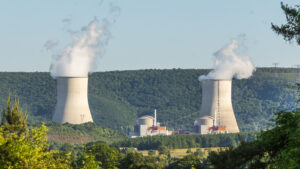
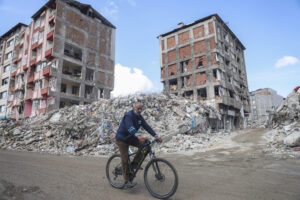
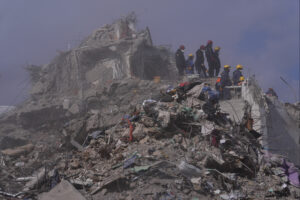
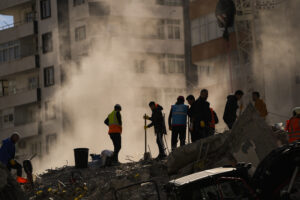
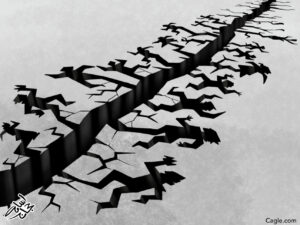

You need to be a supporter to comment.
There are currently no responses to this article.
Be the first to respond.